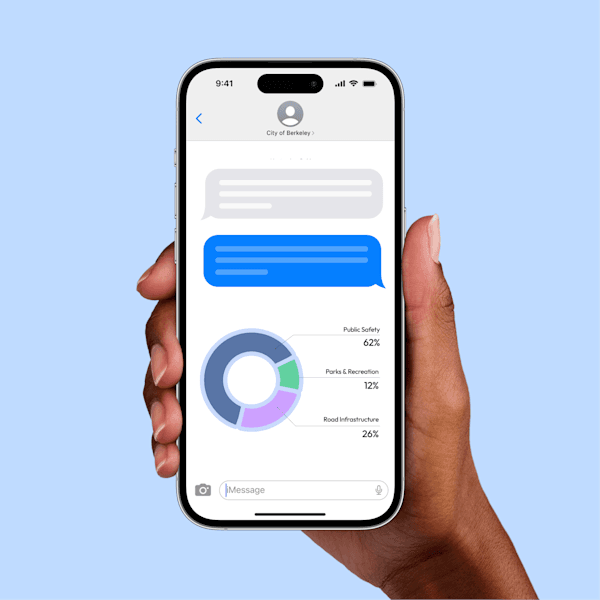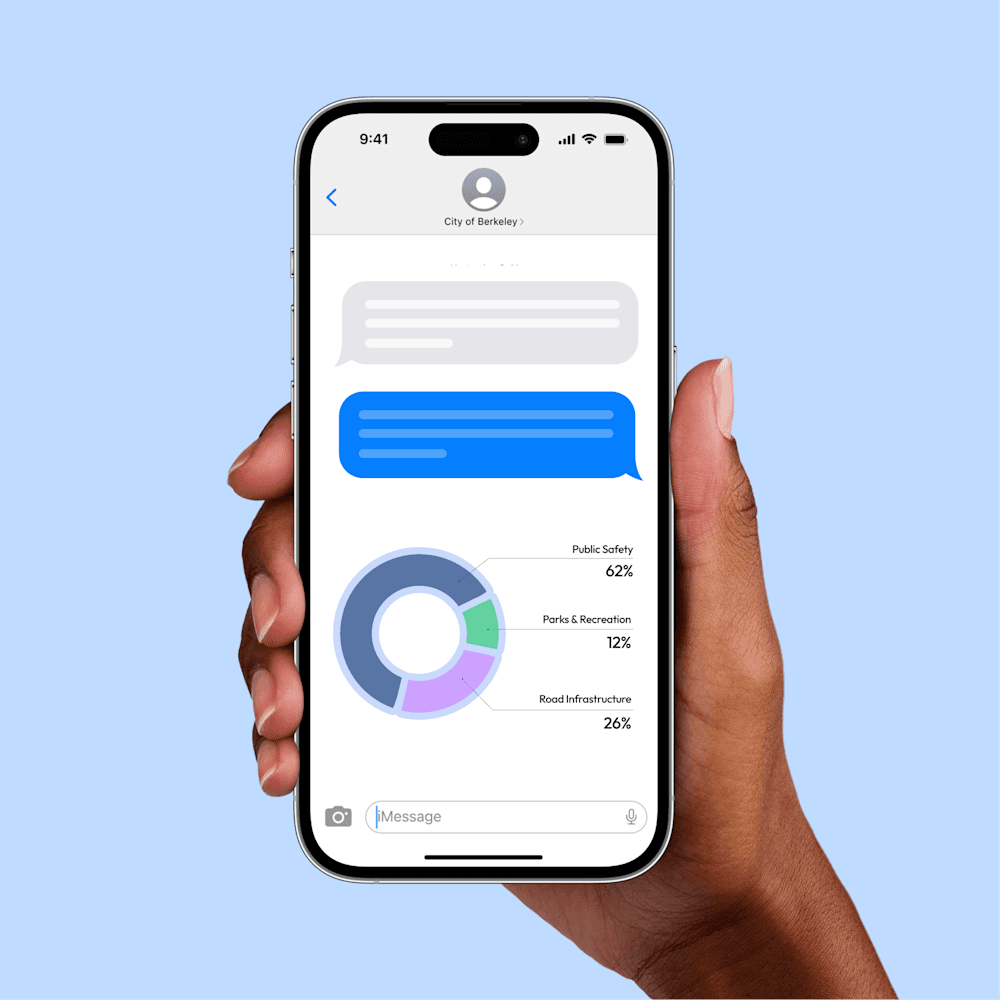
What Is Civic Technology? Tools That Strengthen Democracy
Civic technology, or civic tech, is reshaping how communities connect with government. From participatory budgeting platforms to resident feedback apps, these tools give citizens a stronger voice while helping officials govern more effectively.
In this guide, we’ll break down what civic technology is, how it’s used, why it matters, and where it’s headed. If you’re a community leader, a first-time candidate, or just someone who cares about strengthening democracy, civic tech offers powerful ways to bridge the gap between people and public institutions.
What Is Civic Technology?
Civic technology refers to digital tools and platforms that make it easier for people to engage with government and community decision-making.
Unlike general-purpose technology, civic tech is built specifically to:
Enhance civic engagement
Increase transparency and accountability
Simplify access to government services
Give citizens a voice in policymaking
Think of civic tech as the infrastructure for modern democracy. Just as roads and bridges connect people physically, civic tech connects people to power digitally.
Civic Technology vs. Social Media
It’s easy to think of civic tech as just another kind of social media, since both help people share information and connect.
However, they ultimately serve different purposes, and often complement each other:
Social Media: Great for sparking conversations, building awareness, and mobilizing quickly. It’s where people already spend time, making it useful for outreach. At the same time, it’s not built specifically for government services or decision-making.
Civic Technology: Built with civic participation in mind. These tools help residents report issues, give feedback on policies, or even vote on community budgets. They’re designed to make government more transparent and responsive.
The two often overlap. For example, a city might post a new initiative on Facebook or Instagram, but collect community feedback through a civic tech platform. Used together, they can strengthen both awareness and action.
The Benefits of Civic Technology
Civic tech is about more than just convenience. When applied effectively, civic tech tools encourage:
More Public Engagement: Residents can give input, propose projects, or report issues without needing to attend meetings in person. That leads to more representative participation.
Transparency and Accountability: Open data and reporting platforms let citizens see where money goes, how decisions are made, and hold leaders accountable.
Efficiency in Services: Online portals and apps reduce wait times, cut paperwork, and make government services more accessible.
Inclusivity and Equity: Tools designed with accessibility in mind can help people with disabilities, limited mobility, or language barriers participate more fully.
Community Empowerment: Participatory budgeting and feedback platforms let neighbors co-create solutions that reflect real community needs.
Innovation in Governance: By adapting tools like artificial intelligence (AI), governments can analyze problems faster and design smarter solutions.
Together, these benefits strengthen trust between communities and their governments, and for Independent leaders and grassroots movements, civic tech can provide low-cost, scalable ways to reach and mobilize supporters.
Civic Technology Examples in the United States
Civic tech is already used around the country to improve how communities function.
Some of the most common types of civic tech already in use include:
#1: E-Government Services
Cities, counties, and states increasingly offer digital portals for government services. These platforms simplify interactions between residents and the government that serves them. Instead of waiting in line or filling out stacks of paperwork, people can complete tasks online.
Examples of tasks e-government services can simplify:
Paying property taxes
Applying for business permits
Renewing driver’s licenses
Accessing public health records
Municipal portals like NYC311 even allow residents to request services like trash collection or file noise complaints. Digital government portals can save citizens time and reduce government inefficiency. Additionally, the services become more accessible, especially for people in rural or underserved areas and those who cannot easily travel to government offices.
LEARN MORE: Unsure who to contact about a government service? Explore who’s responsible for local vs. state government services.
#2: Constituent Engagement Platforms
Some governments use structured platforms to collect resident input outside of traditional public hearings or town hall meetings.
Some examples of government-led public comment forums include:
GoodParty.org Serve: A tool designed to make public feedback easier to collect and act on, helping elected officials move from raw input to real policy decisions.
EngagementHQ: A tool used by local and state-level government agencies across the United States. The platform allows residents to weigh in on projects through online forums, polls, and interactive maps.
MetroQuest: Provides interactive online surveys for regional planning agencies. Through these surveys, residents can rate policy options, map concerns in their neighborhood, and prioritize funding.
These platforms bring public comment into the digital age. By offering polls, forums, mapping tools, and feedback hubs, they make participation possible for more people, including parents, shift workers, or residents with disabilities who might not be able to attend in person. That leads to more representative input, more transparent decision-making, and stronger community buy-in.
#3: Open Data Initiatives
Open data platforms make government information publicly accessible for anyone to use, whether for research, journalism, or community organizing.
Government organizations publish data sets on things like:
Budgets
Crime
Health trends
For example, Data.gov hosts over 250,000 datasets on everything from climate patterns to federal spending, and cities like Chicago and San Francisco also run open data portals, providing neighborhood-level insights. Making data open and accessible encourages transparency and helps citizens and organizations create data-driven solutions to local challenges.
#4: Participatory Budgeting
Participatory budgeting (PB) lets residents directly shape how a portion of public funds are spent, ensuring community priorities shape resource allocation.
In the United States, this approach has taken root in major cities:
New York City runs one of the largest PB programs, allowing residents to propose and vote on projects like school upgrades or park improvements.
Seattle’s PB initiatives have funded youth-led projects that address community safety.
Giving citizens agency over how money is spent strengthens civic engagement, promotes transparency, and improves people’s faith in democracy and government systems.
#5: Citizen Feedback and Reporting Apps
Citizen feedback platforms give residents an easy way to flag issues in their neighborhoods and hold governments accountable for fixing them.
For example, SeeClickFix is an app used in cities like New Haven, CT and Durham, NC. The app allows residents to report potholes, graffiti, or broken streetlights. Many cities also run 311 apps that connect residents directly to service departments.
These platforms speed up service delivery, increase government responsiveness, and foster a stronger sense of community ownership.
#6: Civic Education Platforms
One of civic tech’s most powerful impacts is on education. Helping people understand how democracy works, what issues affect them, and how they can participate meaningfully gives citizens more agency. Armed with a solid foundation of civic knowledge, people are more likely to turn out to vote, attend meetings, contact their representatives, and even run for office themselves.
Some examples of civic tech being used to educate include:
BallotReady: A nonpartisan voter guide that explains every race and referendum on your ballot in plain language.
Rock the Vote and Vote.org: Platforms that simplify voter registration and educate users about election dates, ID requirements, and polling locations.
CivicLex: A nonprofit in Lexington, KY using digital tools to help residents understand local government decisions and how to influence them.
iCivics: An online game-based learning platform founded by Justice Sandra Day O’Connor, reaching millions of students with interactive lessons on how government works.
Unfortunately, most Americans don’t receive much formal civic education in school. Civic tech fills that void. Additionally, younger generations are digital natives, and these platforms meet them where they are. Civic tech can make democracy more accessible with clear, interactive explanations that reduce the intimidation factor of politics and make it easier for people to engage.
LEARN MORE: Start building your civic knowledge with our beginner-friendly guide to politics.
Barriers to Effective Civic Tech
Civic tech isn’t a cure-all. To realize its full potential, governments and communities must address key challenges:
Digital Divide: Unequal access to devices and the internet can exclude marginalized groups.
Privacy and Security: Protecting citizen data is critical.
Accessibility: Tools must be designed for people with disabilities and language diversity.
Trust: Platforms must be transparent and credible to gain public buy-in.
Digital Literacy: Citizens need training and resources to use these tools effectively.
These obstacles don’t mean civic tech isn’t worth pursuing. Rather, they’re reminders that technology is only as effective as the people and policies behind it. To truly strengthen democracy, civic tech has to be designed with equity, security, and trust at the center.
The Future of Civic Technology
The next wave of civic technology is already here. Pilot projects in states like West Virginia have tested blockchain-based voting systems for overseas military personnel. Cities like Kansas City and Columbus have deployed smart traffic sensors and streetlights to improve safety and efficiency.
At GoodParty.org, we believe these innovations should serve people, not big money or political parties. That’s why we’re building Serve: a civic tech tool designed to help local leaders listen more effectively, make transparent, data-informed decisions, and build trust with their communities. Serve takes the promise of civic tech and makes it practical for everyday governance.
Civic technology is transforming democracy from the ground up. By giving citizens tools to participate and leaders tools to respond, it creates a more accountable and inclusive government.
Democracy doesn’t just happen on election day. It happens every day. Civic tech is the bridge that connects people and power.
Photo by fauxels
Ready to see civic tech in action? Sign up for GoodParty.org Serve and join a growing movement to strengthen democracy where it matters most: in our communities.

